
The Nomad is a series of stories, fascinations, encounters, observations, experiences, joy of the moments by me, Ulrike Reinhard – all around my travels. Stay tuned!
Ulrike Reinhard is The Nomad 🙂
Year after year after year I pilgrim to Venice. I always come to see the Biennale and on top of this the sheer beauty of the city. It’s where tradition and future meet. Where thinking has no boundaries.
For me the most impressive place in Venice is the former submarine harbour – right behind the Arsenale which is the home for the annual exhibition. Every day I’ve spent at least an hour there to relax from my Biennale visit and digest all the impressions.
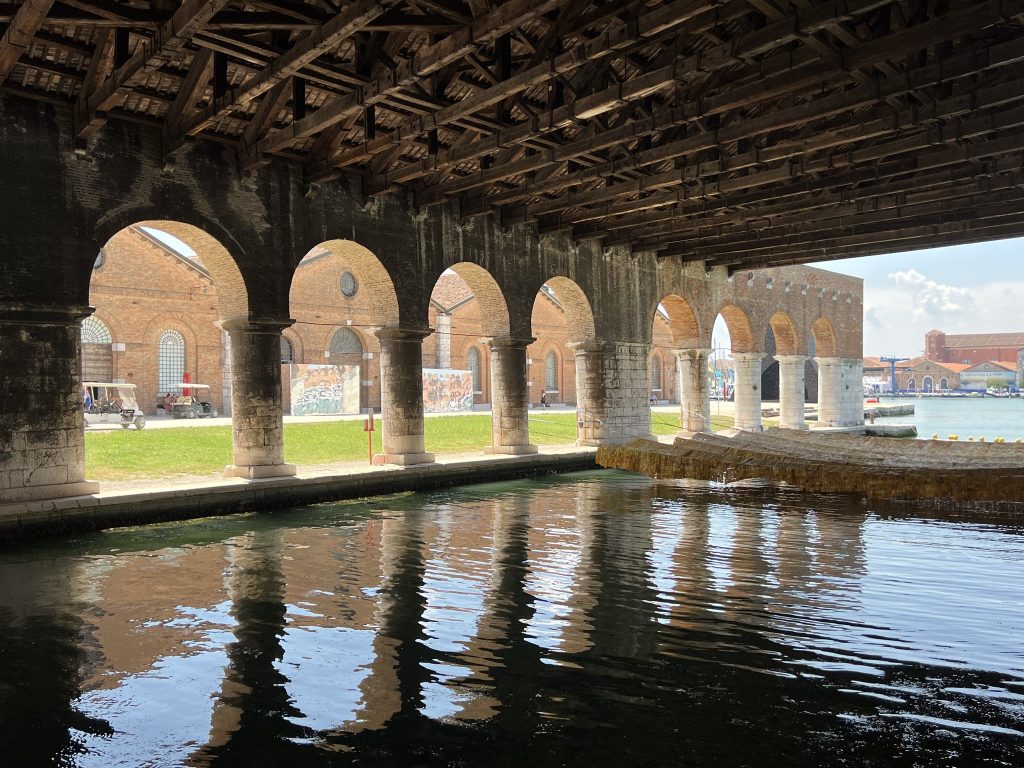
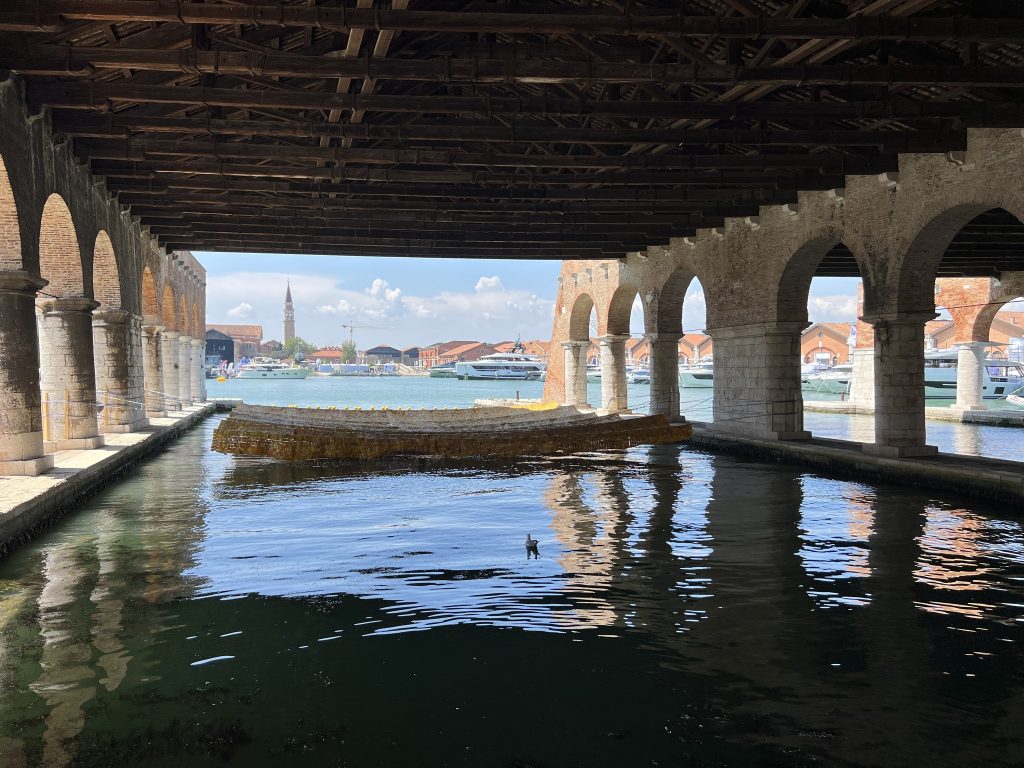
This years Biennale Architecture is guided by two main principles: decolonisation and decarbonisation. There are significant more Black and African participants than in previous exhibitions. This is simply visible but you also FEEL it when you walk through. It is much more experimental, it is much more free what you see and experience. It really, really touches REAL LIFE issues meaning it is not DETACHED from our lives. Lack of water, air pollution, new ways of farming, re-use of abandoned buildings – you name it , it’s there. And not only as a “piece of art”, but as a possible solution. So finally this BIG CULTURAL EVENT Venice Biennale has accepted the challenge not only to showcase but also to drive change actively! They’ve also established new efforts in reduzing carbon emission mainly in the way they present the exhibition pieces and they re-use the materials of last years’ show.
The national pavilion of The Netherlands challenged exactly this question, if a cultural event like the Biennale can indeed drive change. They established a testing ground for enhancing new ideas – an ongoing experiment during the entire length of the Biennale.
The Laboratory of the Future
Here is what Lesley Lokko, the curator of this years’ event said about the topic and the intentions:
“What does it mean to be ‘an agent of change’? (…) Over the past nine months, in hundreds of conversations, text messages, Zoom calls and meetings the question of whether exhibitions of this scale — both in terms of carbon and cost — are justified, has surfaced time and again. In May last year, I referred to the exhibition several times as ‘a story’, a narrative unfolding in space. Today, my understanding has changed. An architecture exhibition is both a moment and a process. It borrows its structure and format from art exhibitions, but it differs from art in critical ways which often go unnoticed. Aside from the desire to tell a story, questions of production, resources and representation are central to the way an architecture exhibition comes into the world, yet are rarely acknowledged or discussed. From the outset, it was clear that the essential gesture of The Laboratory of the Future would be ‘change’”.
“(…) For the first time ever, the spotlight has fallen on Africa and the African Diaspora, that fluid and enmeshed culture of people of African descent that now straddles the globe. What do we wish to say? How will what we say change anything? And, perhaps most importantly of all, how will what we say interact with and infuse what ‘others’ say, so that the exhibition is not a single story, but multiple stories that reflect the vexing, gorgeous kaleidoscope of ideas, contexts, aspirations, and meanings that is every voice responding to the issues of its time?”
“It is often said that culture is the sum total of the stories we tell ourselves, about ourselves. Whilst it is true, what is missing in the statement is any acknowledgement of who the ‘we’ in question is. In architecture particularly, the dominant voice has historically been a singular, exclusive voice, whose reach and power ignores huge swathes of humanity — financially, creatively, conceptually — as though we have been listening and speaking in one tongue only. The ‘story’ of architecture is therefore incomplete. Not wrong, but incomplete. It is in this context particularly that exhibitions matter”.
My favourites
I’ve spent two full days in the Arsenale and another two days in the Biennale Giardini where all the country pavillons are located. I haven’t seen everything, probably I haven’t understood everything and also sometimes a great project is hidden behind an not so attractive presentation. So maybe I missed out some great work because of that. Yet here are my favourites – and I say MY favourites; I can’t judge by any architectural and artistic means, I can ONLY say this is what appealed to me and drew me in.
Terra – The Brazilian Pavilion
The Brazilian Pavilion was curated by Gabriela de Matos and Paulo Tavares – two young architects. The curators thought of Brazil as earth – looking not only to the memories it contains, but to the future as well, to reconsider architecture’s position in facing the most pressing contemporary urban, territorial and environmental issues. The entire pavilion features earth-covered floors and rammed-earth plinths.
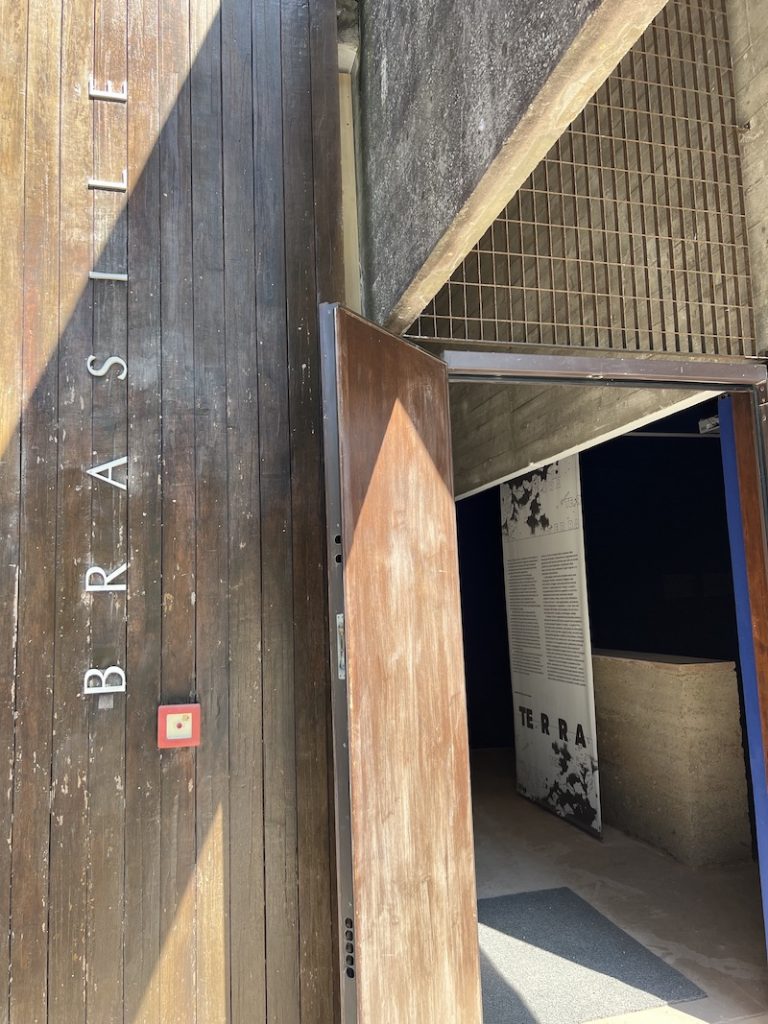
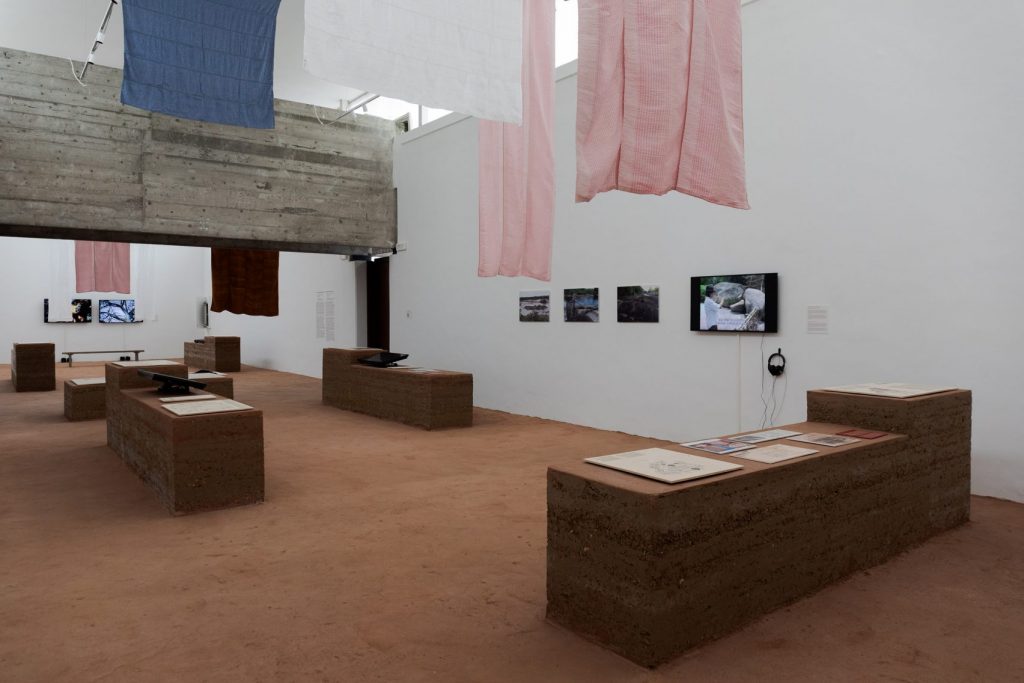
For me it was almost like cloaing a circle – the exhibition pieces showed in words, images and videos the roots of the Afro-Brazilian and indigenous people, their knowledge which was almost destroyed during the times of colonization and is now NOW coming back as THE wisdom to be shared and relied on. It’s a very strong statement and showcased in some examples that these voices need to be included in the architectural design process. And they are!
As always, there is a long way to go – yet with the newly estalblished Ministry for Indeginous People thay have become a much stronegr voice!
I loved the colours and materials and the entire pavilion underlines the need for a diverse group and not only specialists, in this case architects, to build better. During the exhibition they are running workshops for these kind of collaborations.
Terra has won the Golden Lion for best participating nation.
DARR
Over the last 20 years, architects Sandi Hilal and Alessandro Petti — founders of the artistic practice DAAR — have developed research-based projects at the intersection of architecture, art, pedagogy, and politics. From art exhibitions to interventions, each work engages in the global struggles for justice and equality and the need to challenge dominant collective narratives and offer new socio-political imaginations. Their exhibition piece at the Arsenale reflects those principles. It was a study in the rural settlement of Borgo Rizza (Syracuse, Sicily) where the building was constructed in 1940. They reproduced its fascist architectural facade and re-used it in various new ways – they included the people in Borgo Rizzi and over the process the people achieved a better understanding of the facist language in architecture and therefore were able to use the parts in completely different ways.


Inside the Arsenale, the installation comes to life as a reproduction of Borgo Rizza’s main building façade, which was deconstructed into fifteen multipurpose modules. Since May 2022, these modules have been engaging conversations with different sites across the world. Coated in a vivid terracotta hue, the modules served me as well as other visitors as a seat to rest on while watching a the film projected onto a wall.
DARR received the Golden Lion for best participant.
Xinjiang’s Network of Detention Camps
The installation – a 30 minutes video with some additional text and photo information – is also part of the main exhibition in the Arsenale. It is produced by Alison Killing of Killing Architects and is targeting the mass detention of Muslims in the Xinjiang region. Their research is based on satellite imagery, 3D modeling, and the analysis of Chinese prison building regulations – there are no journalistic reports available. So they had to find these new ways. Their work made it possible for the first time to get a much better idea on the size, capacity and structure of these camps. The Chinese government calls them re-education camps. Alison succeeded in talking to three former detainees and provides valuable what daily life in such a camp meant for the prisoners.
I watched the video twice and was truly impressed by the detailed work. For me it is not really obvious how this piece serves the general topic of the Biennale, it certainly is a political statement – not well received by China.
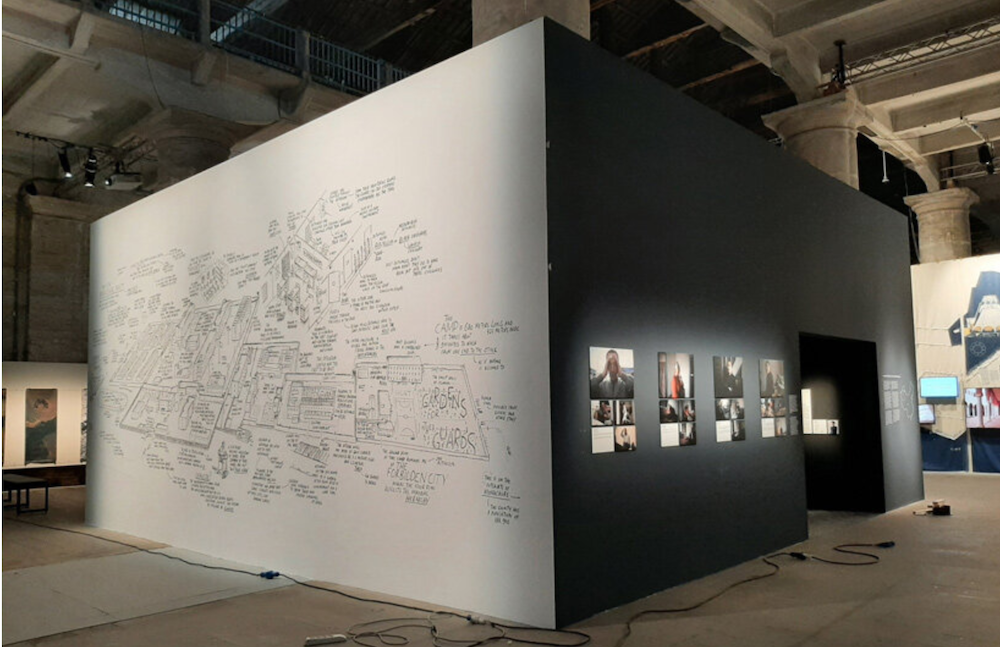
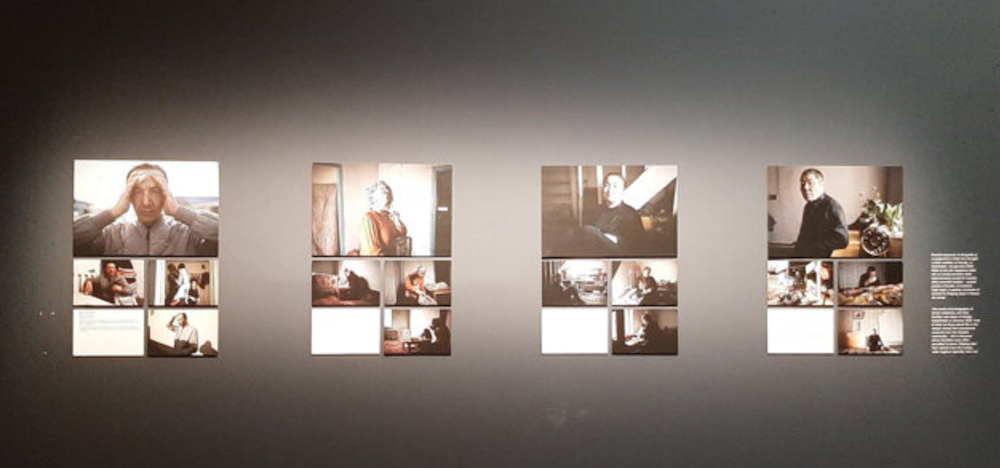
This piece caused quite some turmoil. China has officially dropped out of the exhibition because of this documentary, blasting it as fake news. See more here.
And then there was the most colorful exhibition piece by Olalekan Jeyifous, born in Lagos, Nigeria and now living in Brooklyn, New York. He titled his work
ACE/AAP
It was bright and shining! With his vibrantly coloured sci-fi images and complex models, he envisioned a techno-ecological retro-future emerging from the remnants of colonial rule. He wrote a gripping narrative worthy of a novel.




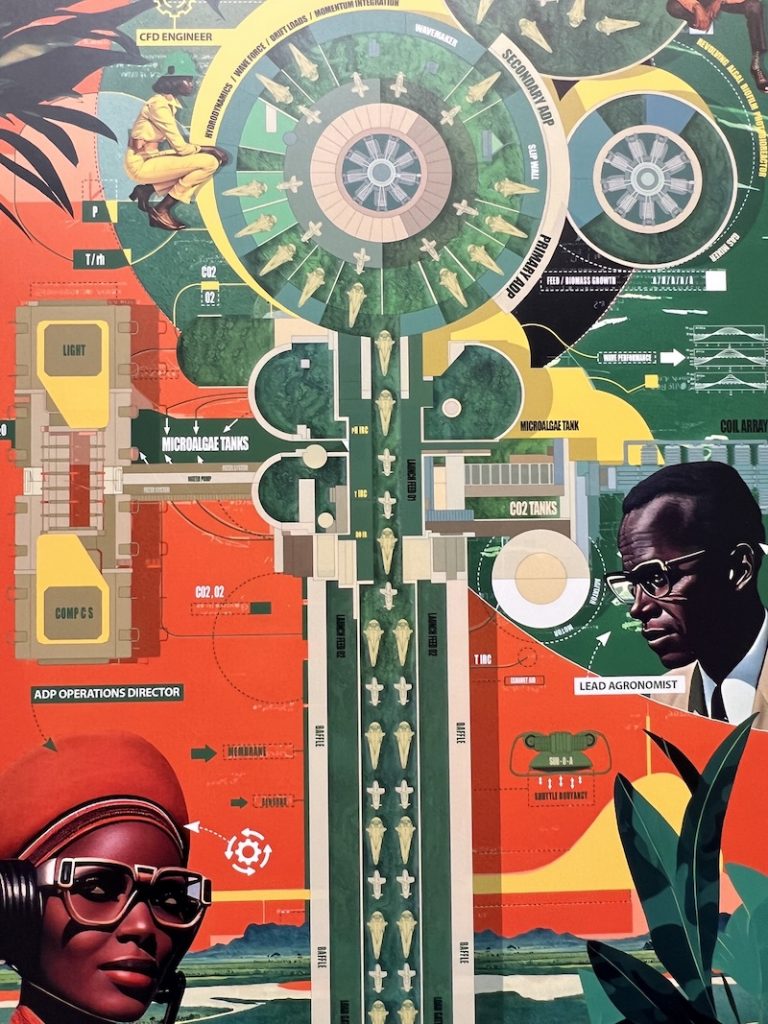
Jeyifous’ narrative takes place in an imaginary space and time: following the Pan-African movement and the wave of African decolonization, imperialist structures focused on economic exploitation and resource extraction were dismantled. At the same time, various local environmental organizations across the continent converged and united under the collective banner of the African Conservation Effort (ACE).
In an effort to restore the ecological balance of Africa’s ecoregions, ACE leveraged indigenous knowledge systems to establish sophisticated networks integrating renewable energy and green technologies.
At the forefront of these endeavors there is the All-Africa Protoport (AAP), a groundbreaking system for generating renewable and sustainable energy. This innovative infrastructure was designed to facilitate swift aid delivery but also to enable efficient land and sea travel within and between continents.
The End
And last but not least and a good way to end this article – my favourite quote. Such quotes were scattered all over the Arsenale.
